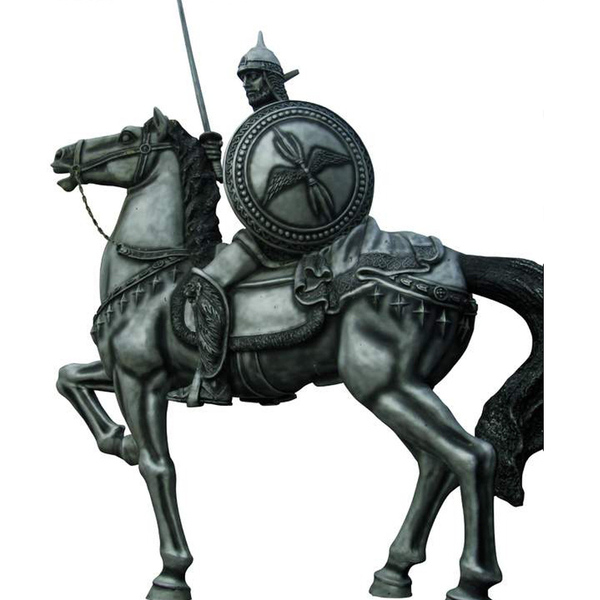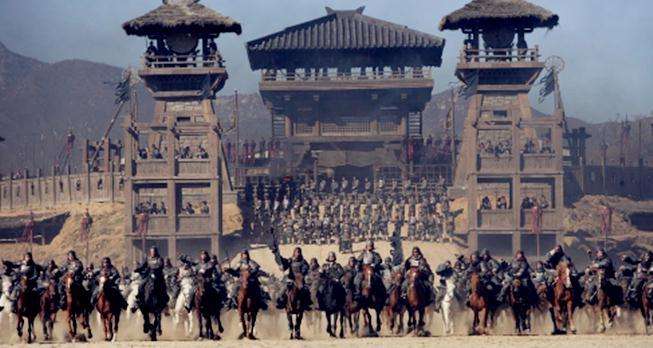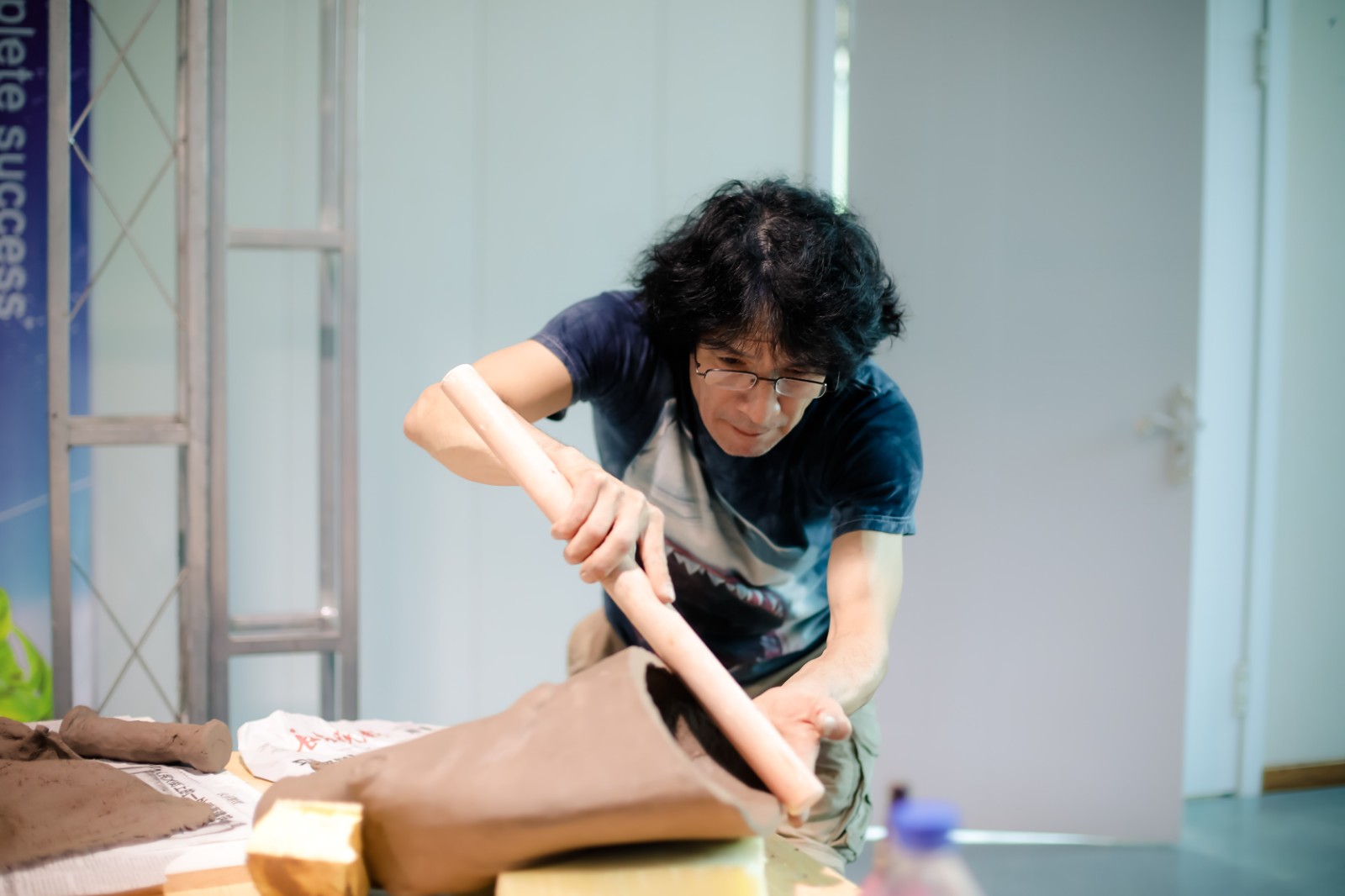
The war is over. The city and the village have recovered peace and tranquility. A battle-hardened soldier returns to his hometown from the battlefield. He is sturdy, muscular, and resolute. With the dust and smoke of the battlefield, and the pride of defeating the enemy, he returns triumphantly. He takes off his armor, hangs it on a bamboo stand, picks up a baby with his wide arms, and places this young life in a cradle like a “bird’s nest”. With both hands holding the baby, he gently lulls the baby to sleep ... …
What an intriguing scene, and what a warm and touching picture! This is the visual image presented by work The Peace of the Warrior created by a Peruvian ceramist Kalin Luy Ken in the 8th China Changchun International Ceramics Symposium & the 1st “Yatai•Lotus Mountain Prize” International Ceramics Contest in 2019.
The work is made of clay and measures 74.0 × 56.0 × 43.0 cm. The work uses realism to express two parts of the plot: one part is the armor hanging on the bamboo, indicating that the war is over; the other part is the soldier holding the baby, which is the main body of the work. In the eyes of the viewer, the whole work seems to tell a beautiful story. As we all know, human history is actually a history of “war and peace.” As the primitive clan society disintegrated and surplus property appeared, in order to possess and rob the surplus property, people used force; and the possessed or looted people also used force to resist the force or defend themselves, so there was a war. Of course, there are justice and injustice in war.
From a historical perspective, people around the world can be divided into farming nations, nomadic nations and marine nations. Generally speaking, farming nations are hardworking, simple, and love peace; the Chinese nation is the most typical traditional farming nation. The nomadic nations and marine nations are more ambitious. They advocate military force and tend to attack and invade. This is not difficult to understand: for example, nomads must go to find a new pasture when the grass in their pastures (territories) is eaten up by sheep (or horses, cattle, camels), otherwise the sheep and horses will be hungry and dead. The Huns and Cossacks are two examples in this case. Similarly, the survival of marine nations depends on attacks and expansion, which accounts for the appearance of Vikings and Pirates of the Caribbean. The Peace of the Warrior clearly shows a solider of a “farming nation”, because the detail of “bamboo” is the best footnote. The image of a soldier returning to his hometown and holding the baby expresses the author’s emotion and desire to love life, pursue peace, and yearn for a better future.
It should be mentioned that this work uses many Chinese elements to express the theme, such as the bamboo, armor, and a cradle. Especially the cradle, it is a small version of “bird’s nest” in Beijing. These Chinese elements not only express the author’s love and respect for Chinese history and culture, but also add a sense of rich history and shock to the work.
Author: Kalin Luy Ken is a Peruvian sculptor and ceramist. He has been engaged in creation of ceramics for many years. He has participated in international exhibitions such as the “Artexpo New York” in the United States, the “New Taipei Ceramics Biennial” in Taiwan, and the “Padua World Expo” in Italy. Most of his works focus on the current issues like environmental protection, people and nature and show the fusion of Eastern and Western cultures.
Contributor: Yiding



Kalin Luy Ken